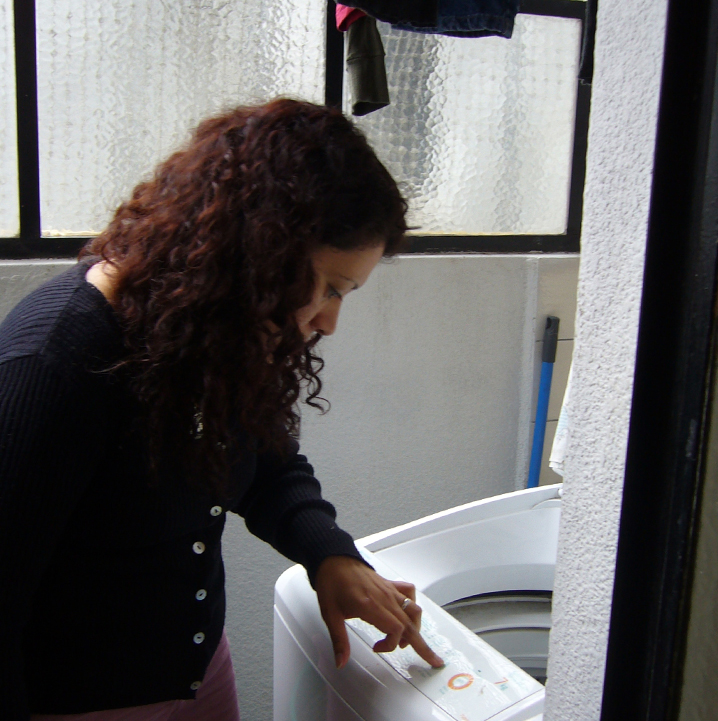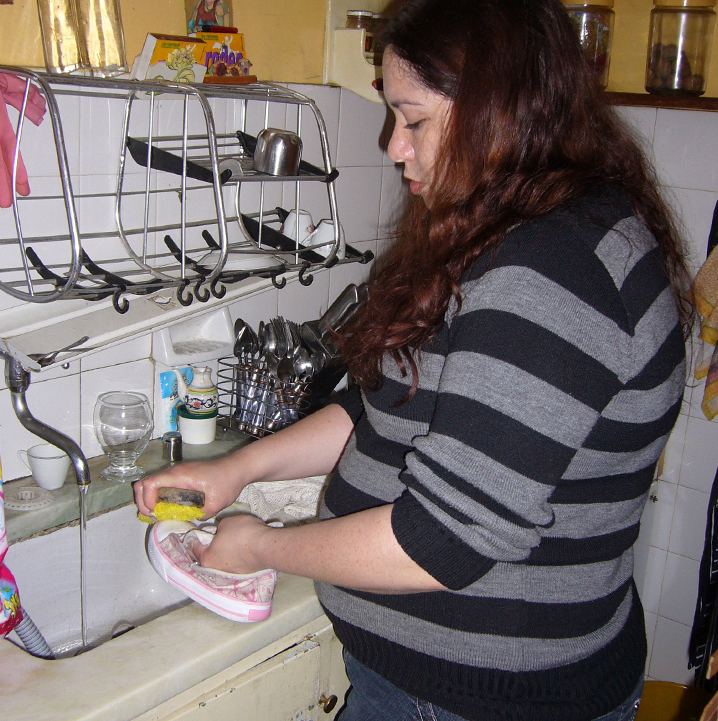
Zorro is an Argentine brand with products leading the laundry process. The brand manager contacted us to perform in-depth interviews while observing women do the laundry. We recruited eight participants and interviewed them in their homes.
We had three goals for the research
1. Gain insights about how stay-at-home mothers approach and execute their laundry process
2. Understand the emotional aspects involved in identifying clean and dirty clothing
3. Document the process for brand purposes

Jimena talking to us about what it means to be responsible for the family's clean clothing.
"A house says a lot about the people living in it, same with the clothing. I can't stand seeing my kids dirty. When we are about to leave, if I even see one stain I will ask them to go to their bedroom and change their clothing. Then we can leave because I feel better as a mom - Jimena"

Gisela (left) and Mariana (right) provided us with great insights around the laundry process.

We requested the client previous qualitative and quantitative reports to review the existing information. I worked together with another anthropologist to conduct in-home interviews and observe women practicing their laundry process. We interviewed, observed and video-recorded four women. We looked for representations that women had regarding the laundry process, clothing, cleanliness and emotional impact. We delivered a detailed presentation as well as eight video summaries of the video-recorded interviews. We also curated the video content to bring out the most valuable insights.
1. Clean clothes speak about your identity and competency as a wife, as a mother and someone responsible for your family's well-being.
2. The passing of time requires washing clothes, even tough they might not look dirty.
3. Clothing that has one stain is not necessarily seen as dirty however it requires washing. This means that usually more clothes are being washed than what PR firms promote for their products.
1. The multiple and diverse actions taken when washing clothing makes it a much more complex and extensive process than the mainstream image of it.
2. Dirty or clean clothing speaks about the role of the mother and housewife. Doing laundry is one of the few activities where the result is immediatley judged outside the house and that creates a moral burden for all women.
3. Dirty is more than how it looks and how it smells. On one hand, any symptoms of daily use makes the clothing dirty. On the other hand some clothing may be stained but still be considered clean.
4. Zorro and other clothing detergents are considered the first step in the laundry process. Women often use other products. This creates a customized washing experience.

A mom explaining how she feels when her son's bib is dirty (en Español)

"The laundry" (en Español)

"The public Eye" (en Español)

Video of participant Gimena (en Español)

Video of participant Eva (en Español)

Video of participant Gisela (en Español)

Video of participant Laura (en Español)
Your Shot - National Geographic
Jobs-to-be-done
JSK -Stanford
Research & UX Design
Radio Ambulante
Research & UX Design